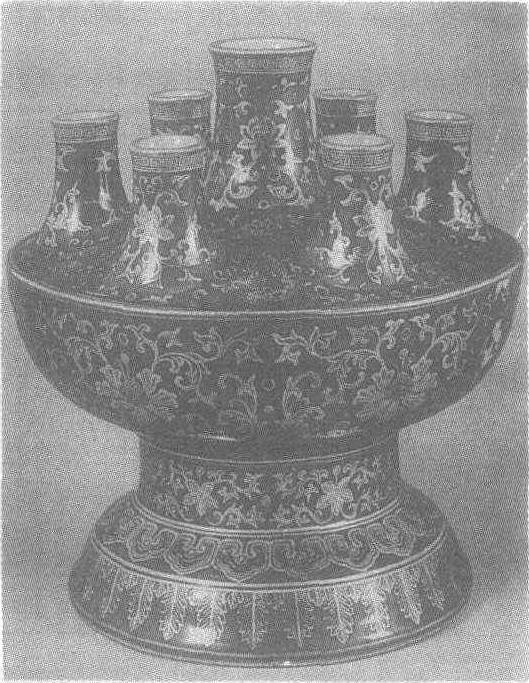“大清乾隆年制”蓝釉描金花卉七孔瓷花插
清。高25.3厘米,口径5厘米。台北故宫博物院藏。此蓝釉品种俗称霁蓝,霁蓝又名祭蓝、积蓝,属高温石灰碱釉,其特点为色泽深沉,色调浓淡均匀,除单色釉外,往往用金彩装饰。此器呈青铜豆形,面有管状七孔,腹部扁圆,高圈足呈座形。器表施霁蓝釉,器腹和七个插孔以金彩绘缠枝花卉,孔口饰一周回纹。器足有金彩缠枝纹、云头纹、蕉叶纹各一周,全器装饰富丽堂皇,底有“大清乾隆年制”篆书款。

| 词条 | “大清乾隆年制”蓝釉描金花卉七孔瓷花插 |
| 类别 | 中文百科知识 |
| 释义 | “大清乾隆年制”蓝釉描金花卉七孔瓷花插清。高25.3厘米,口径5厘米。台北故宫博物院藏。此蓝釉品种俗称霁蓝,霁蓝又名祭蓝、积蓝,属高温石灰碱釉,其特点为色泽深沉,色调浓淡均匀,除单色釉外,往往用金彩装饰。此器呈青铜豆形,面有管状七孔,腹部扁圆,高圈足呈座形。器表施霁蓝釉,器腹和七个插孔以金彩绘缠枝花卉,孔口饰一周回纹。器足有金彩缠枝纹、云头纹、蕉叶纹各一周,全器装饰富丽堂皇,底有“大清乾隆年制”篆书款。
|
| 随便看 |
开放百科全书收录579518条英语、德语、日语等多语种百科知识,基本涵盖了大多数领域的百科知识,是一部内容自由、开放的电子版国际百科全书。